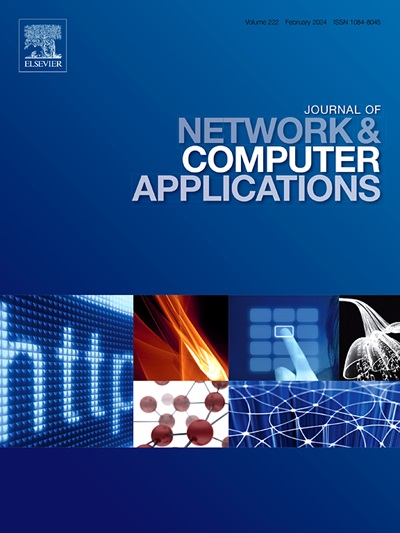Fair association and rate maximization in 6G UAV Aided HS only network and HetNet
IF 8
2区 计算机科学
Q1 COMPUTER SCIENCE, HARDWARE & ARCHITECTURE
引用次数: 0
Abstract
Advancements in technology are driving the demand for high-speed, real-time interactive applications with requirements for faster data rates, reduced latency, and expanded network capacity to deliver immersive user experiences. Additionally, the increasing connectivity needs surpass the capabilities of fifth-generation (5G) networks. Sixth-generation (6G) networks are emerging to address these demands. To maximize capacity in 6G networks, various strategies such as enhanced coverage, unmanned aerial vehicle (UAV)-assisted high-powered base station (HS) networks, and heterogeneous networks (HetNets) are being explored. This paper introduces a novel approach utilizing mobile device clustering (MDC) in combination with downlink hybrid multiple access (H-MA) techniques in UAV-assisted HS-only networks and HetNets. The objective is to jointly optimize mobile device (MD) admission in clusters, MD association with base stations, and network sum rate while ensuring fairness. To solve the resulting mixed integer non-linear programming (MINLP) problem, an outer approximation algorithm (OAA) is employed. The effectiveness of this approach is evaluated and compared in both UAV-assisted HS-only network and HetNet scenarios. The results demonstrate the superior performance of UAV-assisted HetNets in terms of performance indicators (PIs) like sum rate maximization, MD cluster admission, MD base station association, power allocation to MDs, and MD fair association with base stations (MDFAS). Furthermore, the proposed technique outperforms existing methods, including [36], across all PIs, highlighting its outstanding performance.
6G无人机辅助HS网络和HetNet中的公平关联和速率最大化
技术的进步推动了对高速、实时交互应用程序的需求,要求更快的数据速率、更低的延迟和更大的网络容量,以提供沉浸式用户体验。此外,不断增长的连接需求超过了第五代(5G)网络的能力。第六代(6G)网络正在兴起,以满足这些需求。为了最大限度地提高6G网络的容量,正在探索各种策略,如增强覆盖、无人机(UAV)辅助的高性能基站(HS)网络和异构网络(HetNets)。本文介绍了一种在无人机辅助HS-only网络和HetNets中利用移动设备集群(MDC)与下行链路混合多址(H-MA)技术相结合的新方法。目标是在保证公平性的同时,共同优化集群中的移动设备(MD)准入、MD与基站的关联以及网络总和速率。为了解决由此产生的混合整数非线性规划(MINLP)问题,采用了外逼近算法(OAA)。在无人机辅助HS-only网络和HetNet场景下,对该方法的有效性进行了评估和比较。结果表明,无人机辅助HetNets在求和速率最大化、MD集群准入、MD基站关联、MD功率分配以及MD与基站公平关联(MDFAS)等性能指标(pi)方面具有优越的性能。此外,该技术在所有pi中都优于现有方法,包括[36],突出了其出色的性能。
本文章由计算机程序翻译,如有差异,请以英文原文为准。
求助全文
约1分钟内获得全文
求助全文
来源期刊

Journal of Network and Computer Applications
工程技术-计算机:跨学科应用
CiteScore
21.50
自引率
3.40%
发文量
142
审稿时长
37 days
期刊介绍:
The Journal of Network and Computer Applications welcomes research contributions, surveys, and notes in all areas relating to computer networks and applications thereof. Sample topics include new design techniques, interesting or novel applications, components or standards; computer networks with tools such as WWW; emerging standards for internet protocols; Wireless networks; Mobile Computing; emerging computing models such as cloud computing, grid computing; applications of networked systems for remote collaboration and telemedicine, etc. The journal is abstracted and indexed in Scopus, Engineering Index, Web of Science, Science Citation Index Expanded and INSPEC.
 求助内容:
求助内容: 应助结果提醒方式:
应助结果提醒方式:


